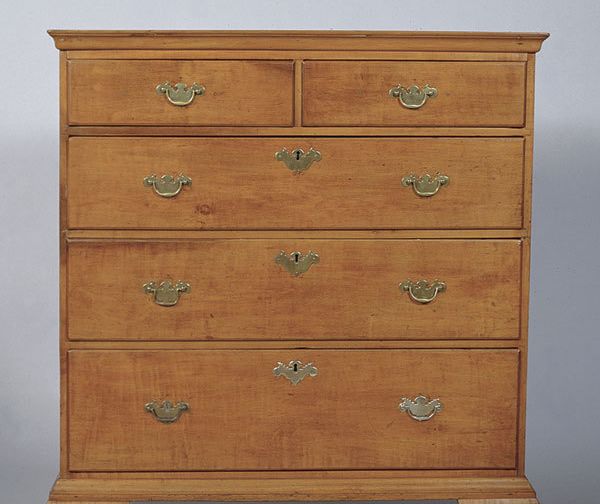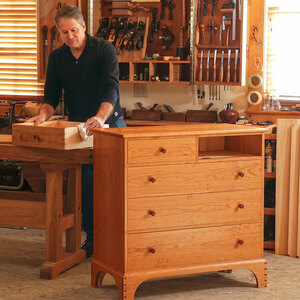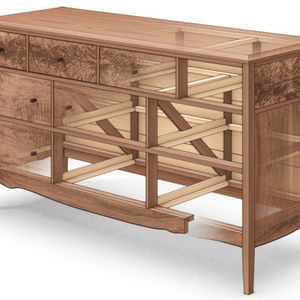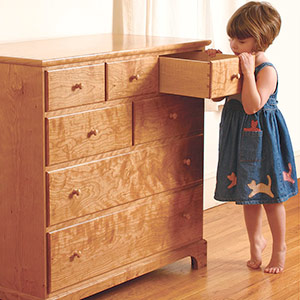A Short History of Chests of Drawers

The modern chest-of-drawers implies an actual case fitted with two or more drawers; any resemblance to an actual chest, fitted with drawers or not, is coincidental. In fact, any chest containing drawers is liable to be seen and spoken of as a chest, not of, but with drawers. Nevertheless, it is from chests that modern chests-of-drawers are descended.
As recently as the 16th century, chests were made with small tills or drawer boxes — enclosed receptacles within the body of the chest. It was a short step to fit a larger drawer into the entire lower part of a joined chest. But even with the additional of further drawers it was still common to think of the drawers as separate boxes within a chest, for many of these early chests with drawers were made with doors that enclosed the drawers.
Furthermore, even after the appearance of chests that were completely filled with drawers, many still retained a lid on the top. Not until the middle of the 17th century did pieces appear at which any pretense of the case being a chest was abandoned.
The appearance and development of various types of furniture is far from neat and absolute; nowhere is this more true than with so-called chests-of-drawers. In a parallel development to what has been described above, a new type of furniture known as a commode made its appearance on the Continent at the beginning of the 18th century. Essentially a low case or cabinet standing on legs or feet, the commode could be fitted with doors, or drawers, or drawers hidden by doors.
Pieces known as commodes are sometimes indistinguishable from a variety of other pieces of different origins, such as cabinets with drawers, sideboards, or self-professed chests-of-drawers.
A clearer lineage may be discerned in the case of lowboys, highboys, tallboys, and a variety of more directly named chest-on-chests. (The suffix ‘boy’ is a corruption of the French word for wood: bois.) All are true chests-of-drawers. Starting as a chest with drawers on a stand, the lowboy developed into a more table-like or desk-like form fitted with a variety of drawers. A highboy may be thought of as a taller version of this, while some usage of the term ‘tallboy’ implies a similarly high chest of drawers but whose stand has now been filled with extra drawers. Although this latter is essentially the same as a chest-on-chest (or double chest-of-drawers), the tallboy developed into a grander piece conceived more as a complete unit (even though still commonly made as two sections) than a straightforward chest on another chest.
As with many other types of furniture, varieties exist defined by specific uses, such as a chiffonier (typically tall and narrow, originally made for ladies to keep needlework and other small cloth articles), lingerie chest-of-drawers (typically made with seven drawers, one for each day of the week, sometimes therefore referred to as “semainiers,” from the French word for “week” semaine), and varieties defined by the period or style in which they were made, such as serpentine or breakfront, Sheraton or Federal.
Graham Blackburn is a furniture maker, author, and illustrator, and publisher of Blackburn Books (www.blackburnbooks.com) in Bearsville, N.Y.






















Log in or create an account to post a comment.
Sign up Log in